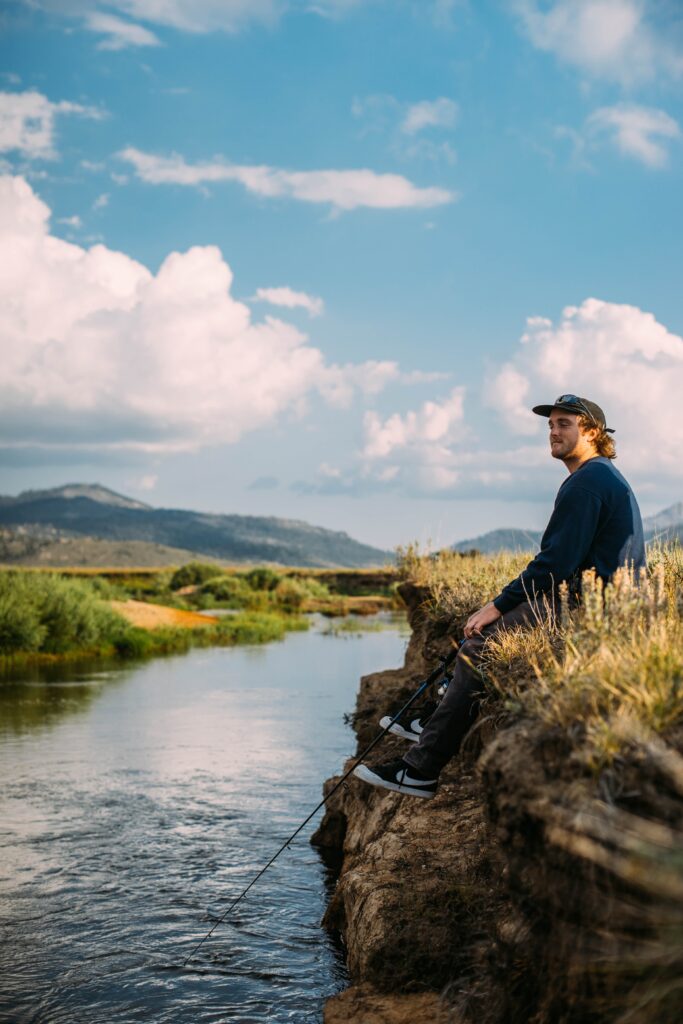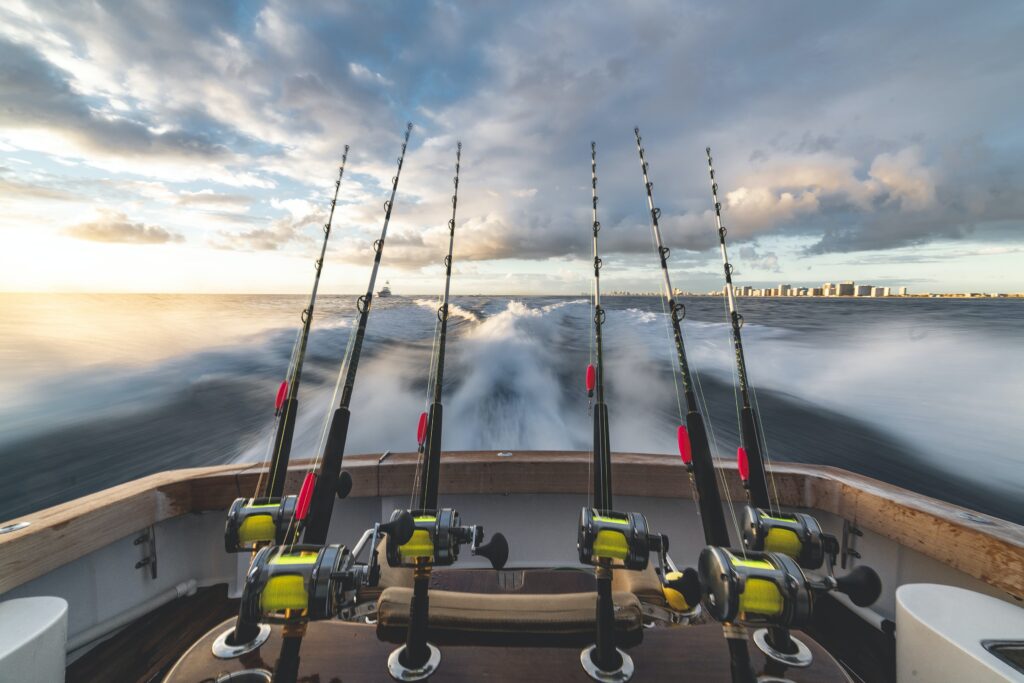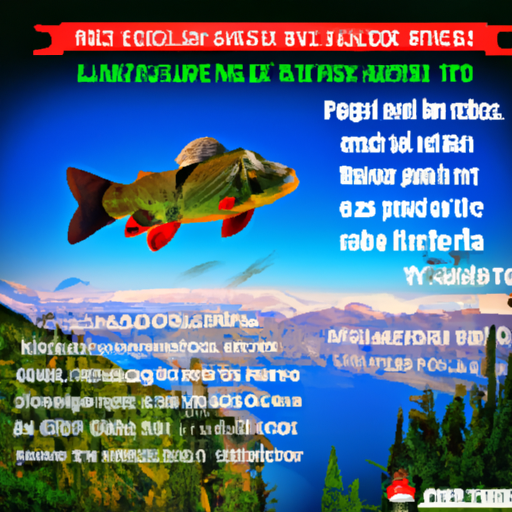Are you a beginner angler looking to explore the beauty of high altitude lakes? Look no further! “Fishing in High Altitude Lakes: A Guide for Beginners” is here to help you navigate the waters, catch your first fish, and create unforgettable memories. This comprehensive guide is filled with expert tips, techniques, and essential information specifically tailored to newcomers in the world of fishing. With this guide in your tackle box, you’ll be fully equipped to tackle the challenges and reap the rewards of fishing in high altitude lakes. Get ready to embark on an exciting adventure and reel in some impressive catches!

Choosing the Right High Altitude Lake for Fishing
When it comes to fishing in high altitude lakes, choosing the right location is essential for a successful and enjoyable experience. Researching potential lakes is the first step in finding the perfect fishing spot. Look for lakes that are known for their abundance of fish species and have a good reputation among anglers.
Researching Potential Lakes
Start by gathering information about potential high altitude lakes in your area. Look for online resources, fishing forums, and local fishing guides that provide insights and recommendations. These sources can give you valuable information about the types of fish present in each lake, as well as the fishing conditions and techniques that work best.
Considering Altitude and Accessibility
When choosing a high altitude lake, it is important to consider the altitude and accessibility. Higher altitude lakes may offer better opportunities for catching larger fish, but they can also pose challenges due to thinner air and extreme weather conditions. Additionally, think about how easily you can access the lake. Consider factors such as hiking distance, availability of parking areas, and any necessary permits or fees.
Checking local Regulations and Permits
Before heading out to a high altitude lake, make sure you are familiar with the local regulations and permits. Some lakes may have specific fishing seasons or catch limits to protect the fish population. Check with the local authorities or visit their website to find out about any fishing permits or licenses required. It’s important to respect these regulations to ensure the sustainability of the fishery and to avoid any legal issues.
Essential Fishing Gear for High Altitude Lakes
Having the right fishing gear is crucial for a successful fishing trip in high altitude lakes. Whether you are a beginner or an experienced angler, selecting the appropriate fishing rod, reel, line, hooks, and baits can make a significant difference in your fishing experience.
Selecting the Right Fishing Rod and Reel
When choosing a fishing rod and reel for high altitude lakes, consider the type of fish you will be targeting and the fishing techniques you plan to use. Opt for a rod that is lightweight but strong enough to handle larger fish. A medium to medium-heavy action rod is generally a good choice for high altitude lakes.
Choosing the Appropriate Fishing Line
The fishing line is an often overlooked but crucial piece of fishing gear. For high altitude lakes, it is recommended to use a monofilament or fluorocarbon line with a higher pound test. Thinner lines may not hold up well against the intense pulling force of larger fish found in these lakes.
Picking the Right Hooks and Baits
The choice of hooks and baits will depend on the fish species present in the high altitude lake you are fishing in. Carry a variety of hooks in different sizes and designs to accommodate different fishing situations. As for baits, try to match the local baitfish or insect species that the fish are feeding on. Artificial baits, such as lures, can also be effective in enticing fish to bite.

Understanding High Altitude Fishing Techniques
Fishing in high altitude lakes requires some adjustments in techniques to optimize your chances of success. Adapting to the thinner air pressure, determining optimal fishing depths, and utilizing different fishing methods can greatly enhance your fishing experience in these unique environments.
Adapting to Thinner Air Pressure
At higher altitudes, the air pressure is lower, which affects a few aspects of fishing. Firstly, it can impact the way fish respond to lures and baits, as the lower air pressure affects their swim bladder. Adjust your fishing techniques accordingly, and consider using more natural and subtle presentations to entice bites.
Determining Optimal Fishing Depths
Fish in high altitude lakes often move to different depths depending on factors such as water temperature, time of day, and availability of food. Use a fish finder or sonar device to locate schools of fish and determine their optimal depth range. Experiment with different depths to find where the fish are actively feeding.
Utilizing Different Fishing Methods
High altitude lakes offer various fishing methods that can be effective in catching fish. Fly fishing, for example, is popular in many high altitude lakes due to the abundance of insect life. Trolling with lures or bait behind a boat is another effective technique to cover larger areas of water and locate schools of fish. Experiment with different fishing methods to find what works best for the species you are targeting.
Familiarizing Yourself with High Altitude Fish Species
Each high altitude lake is unique, and understanding the fish species that inhabit these lakes is crucial for a successful fishing trip. Identifying the native fish species, learning about their feeding habits, and understanding their movement patterns will give you valuable insights into how and where to catch them.
Identifying Native Fish Species
Research the specific high altitude lake you plan to fish in to identify the native fish species. Common high altitude fish species include trout, salmon, char, and arctic grayling. Understanding the characteristics and behavior of these fish will help you choose the right fishing techniques and baits.
Learning About Their Feeding Habits
Fish in high altitude lakes have specific feeding habits that depend on factors such as water temperature, time of day, and food availability. For example, trout are known to be more active and feed more actively during cooler parts of the day. Learn about the specific feeding habits of the fish species you are targeting to increase your chances of success.
Understanding Their Movement Patterns
High altitude fish species may exhibit specific movement patterns throughout the year. For example, some fish species migrate to shallower areas for spawning during certain seasons, while others prefer deeper waters. Understanding these movement patterns will help you locate fish more effectively and increase your chances of catching them.

Preparing for High Altitude Fishing Challenges
Fishing in high altitude lakes can present some unique challenges. Being prepared for altitude sickness, extreme weather conditions, and challenging terrains will ensure your safety and enhance your overall fishing experience.
Managing the Effects of Altitude Sickness
Altitude sickness can affect individuals differently, but it is important to be aware of its symptoms and take necessary precautions. Stay hydrated, avoid strenuous activities during the first few days at high altitudes, and consider taking over-the-counter medications designed to alleviate symptoms. If symptoms persist or worsen, it is important to seek medical attention.
Dealing with Extreme Weather Conditions
High altitude lakes are often located in mountainous regions, where weather conditions can change rapidly. Be prepared for sudden temperature drops, high winds, and precipitation by bringing appropriate clothing layers, rain gear, and sun protection. Check the weather forecast before your trip and be prepared to adjust your plans if necessary.
Navigating Challenging Terrain
High altitude lakes are often located in remote and rugged areas, requiring some hiking or navigating challenging terrains to reach. Be prepared with sturdy hiking boots, a map or GPS, and be familiar with the area’s topography. It is advisable to inform someone about your fishing plans, especially if you are going alone, and always exercise caution while exploring unfamiliar territories.
Safety Tips for Fishing in High Altitude Lakes
Safety should always be a top priority when fishing in high altitude lakes. Acclimatizing to high altitude, bearing basic first aid knowledge, and being aware of wildlife risks will help ensure a safe and enjoyable fishing experience.
Acclimatizing to High Altitude
Allow your body time to acclimatize to the higher altitude before engaging in strenuous activities. Take it easy during the first few days, stay hydrated, and listen to your body. If you start experiencing symptoms of altitude sickness, descend to a lower altitude and seek medical attention if necessary.
Bearing Basic First Aid Knowledge
Having basic first aid knowledge is essential when fishing in remote areas. Carry a well-stocked first aid kit and know how to handle common injuries such as cuts, sprains, and insect bites. Consider taking a first aid course before your fishing trip to be better prepared for any emergencies.
Being Aware of Wildlife Risks
High altitude lakes are often home to a variety of wildlife, including bears, mountain lions, and venomous snakes. Familiarize yourself with the potential wildlife risks in the area and take precautions such as carrying bear spray, making noise to alert animals of your presence, and properly storing food to prevent attracting wildlife to your campsite.

Best Times and Seasons for High Altitude Fishing
Understanding the influence of weather and temperature, recognizing fish behavior throughout the year, and identifying peak fishing seasons are key factors in improving your chances of a successful fishing trip in high altitude lakes.
Considering the Influence of Weather and Temperature
Weather and temperature play crucial roles in fish activity. For example, fish are often more active during cooler parts of the day and may seek deeper, cooler waters during warmer months. Pay attention to the weather forecast and plan your fishing outings accordingly to take advantage of the most favorable conditions.
Understanding Fish Behavior throughout the Year
Fish behavior can change throughout the year due to various factors such as spawning seasons, food availability, and water temperature. Spring and fall are generally productive seasons for fishing in high altitude lakes as fish are more active and willing to bite. Summer months may require fishing deeper waters or early mornings and evenings to increase your chances of success.
Identifying Peak Fishing Seasons
Research the specific high altitude lake you plan to fish in to determine the peak fishing seasons for the target fish species. This information can vary from one lake to another and may depend on factors such as water temperature, hatching seasons, and stocking programs. Knowing the peak fishing seasons will help you plan your trips when fish are most abundant and active.
Techniques for Locating Fish in High Altitude Lakes
Observing topography and surroundings, paying attention to water currents and temperature, and utilizing fish finders and sonar devices can greatly assist in locating fish in high altitude lakes.
Observing Topography and Surroundings
Take the time to observe the topography and surroundings of the lake you plan to fish in. Look for areas where underwater structures such as rocks, fallen timber, or submerged weed beds can provide shelter and food sources for fish. These areas are often productive fishing spots.
Paying Attention to Water Currents and Temperature
Water currents and temperature affect fish behavior and can guide you to productive fishing areas. Observe how water flows within the lake, paying attention to areas where currents merge or create eddies. Additionally, use a thermometer to measure water temperature and note any changes as fish may seek warmer or cooler waters depending on the season.
Using Fish Finders and Sonar Devices
Fish finders and sonar devices are valuable tools for locating fish in high altitude lakes. These devices use sound waves to provide detailed information about the water column, including the presence of fish and underwater structures. Use them to locate schools of fish, determine their depth, and adjust your fishing techniques accordingly.

Tips for Catch and Release in High Altitude Lakes
Practicing catch and release is important for the conservation of fish populations in high altitude lakes. Using appropriate fishing equipment, handling fish with care, and reviving and releasing fish properly can help ensure their survival.
Using Appropriate Fishing Equipment
When practicing catch and release, it is important to use appropriate fishing equipment. Choose barbless hooks or hooks with debarbing tools to minimize damage to the fish’s mouth. Use a landing net with soft mesh to handle the fish gently and avoid removing the protective slime layer.
Handling Fish with Care
Handle fish with care to minimize stress and injury. Wet your hands before touching the fish to prevent removing its protective slime. Support the fish’s body with both hands, avoiding squeezing or applying excessive pressure. If you need to handle the fish for a photo, keep the time out of the water to a minimum.
Reviving and Releasing Fish Properly
Reviving fish before releasing them back into the water is crucial for their survival. Hold the fish gently in an upright position, allowing water to flow over its gills. Move it back and forth slightly to help oxygenate its blood. Once the fish shows signs of readiness, such as strong swimming movements, release it gently back into the water.
Camping and Accommodation Options near High Altitude Lakes
If you plan to stay near high altitude lakes for an extended fishing trip, there are several accommodation options to consider. Finding campgrounds and RV parks, exploring cabin and lodge accommodations, and considering nearby amenities and facilities can enhance your overall fishing experience.
Finding Campgrounds and RV Parks
Campgrounds and RV parks near high altitude lakes provide convenient options for anglers looking to immerse themselves in nature. Many of these campsites offer amenities such as picnic tables, fire pits, and restroom facilities. Check with the local forest service or park management to determine availability and make reservations if necessary.
Exploring Cabin and Lodge Accommodations
For those seeking a more comfortable and convenient option, cabin and lodge accommodations near high altitude lakes can provide a cozy retreat after a day of fishing. These accommodations often offer amenities such as fully equipped kitchens, bedding, and access to nearby hiking trails or recreational activities. Booking in advance is recommended, especially during peak fishing seasons.
Considering Nearby Amenities and Facilities
When choosing your accommodation near a high altitude lake, consider the proximity to amenities and facilities that can enhance your overall experience. Look for options close to fishing gear shops, grocery stores, restaurants, and medical facilities in case of emergencies. Additionally, inquire about any boat rentals or guided fishing services available in the area if you prefer to explore the lake further.
In conclusion, fishing in high altitude lakes can be a rewarding and thrilling experience for beginners and seasoned anglers alike. By choosing the right lake, equipping yourself with the essential gear, understanding the fishing techniques and fish species, preparing for challenges, prioritizing safety, and considering best times and seasons, you can maximize your chances of a successful fishing trip. Remember to practice catch and release to ensure the sustainability of high altitude fish populations and respect any local regulations and permits. With careful planning and a sense of adventure, you can create wonderful memories while fishing in high altitude lakes.





